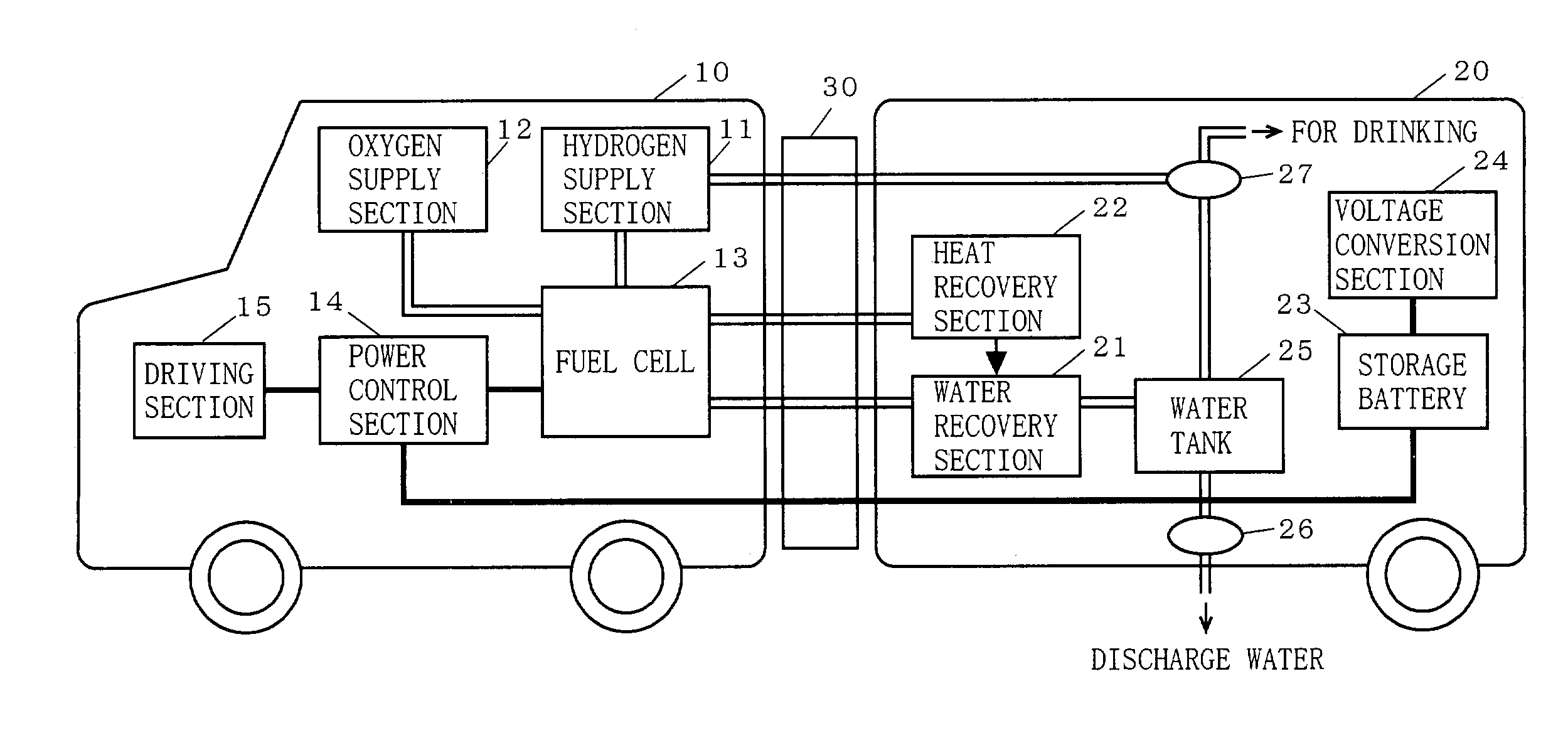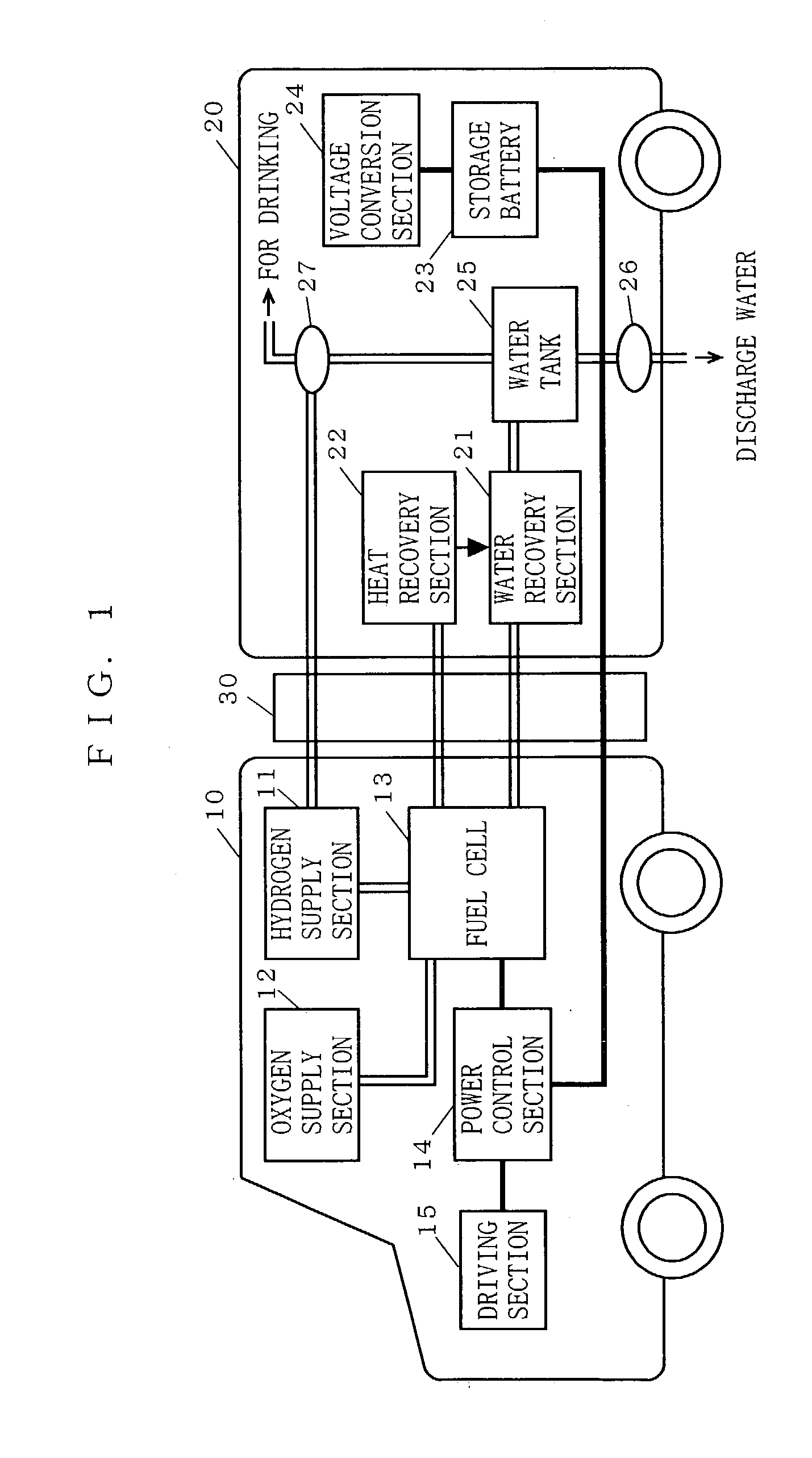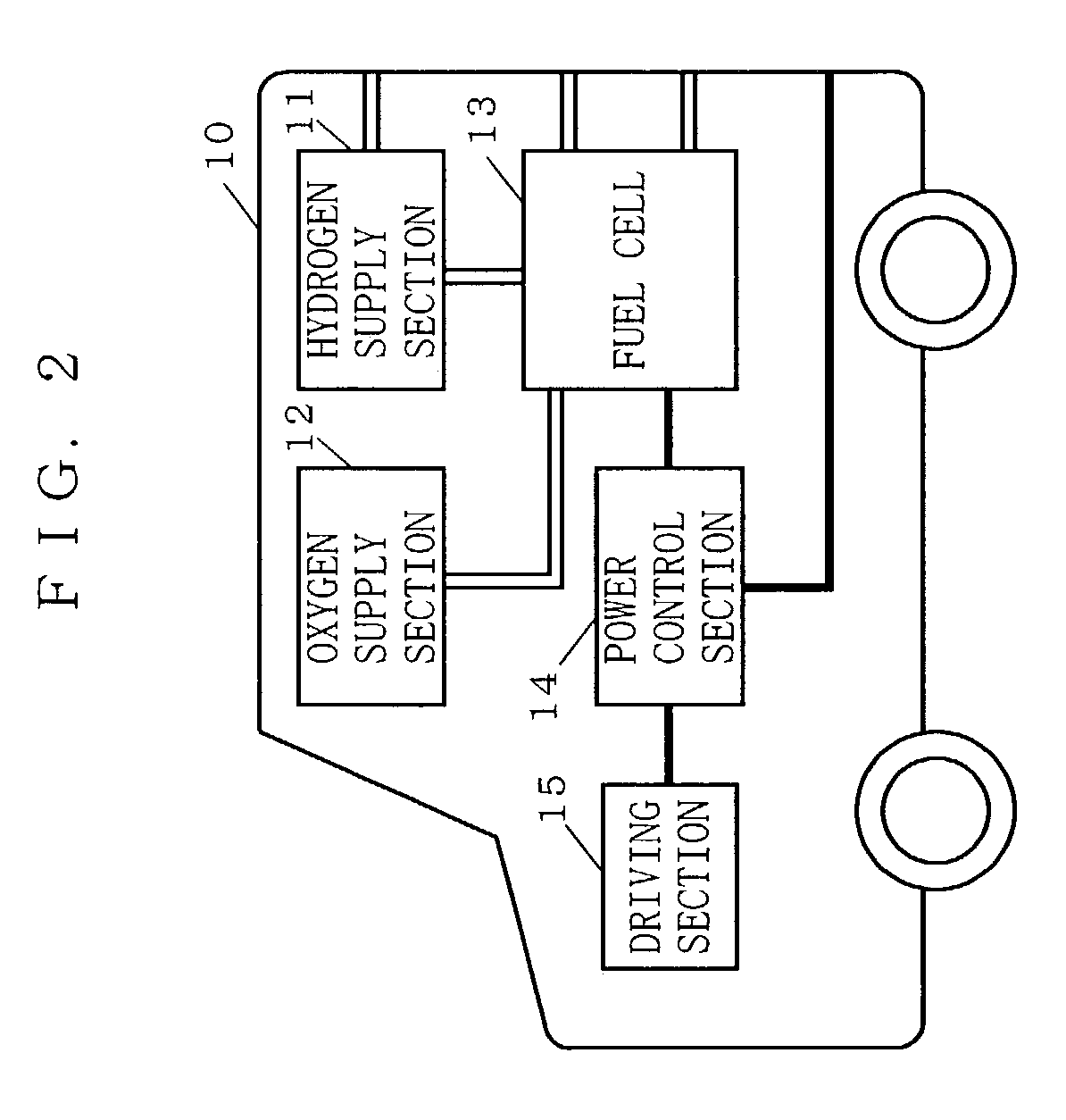Cogeneration vehicle system utilizing a fuel cell car and a mobile unit as a component of the system
- Summary
- Abstract
- Description
- Claims
- Application Information
AI Technical Summary
Benefits of technology
Problems solved by technology
Method used
Image
Examples
first embodiment
[0047]FIG. 1 is a block diagram illustrating the structure of a cogeneration vehicle system according to a first embodiment of the present invention. In FIG. 1, the system according to the first embodiment comprises a vehicle 10 incorporating a fuel cell power generator which utilizes hydrogen as a fuel and a mobile unit 20 having a living space. The vehicle 10 and the mobile unit 20 are jointed via a joint section 30. The joint section 30 joints the vehicle 10 and the mobile unit 20 in such a manner that the mobile unit 20 can be trailed by the vehicle 10 and yet energy provided from the vehicle 10 can be used for cogeneration within the mobile unit 20.
[0048]The mobile unit 20 illustrated herein is a trailer which can be conveniently moved along with the vehicle 10 and utilized by people. A typical example is a mobile house which includes daily living equipment such as a kitchen, a toilet, beds, and so on. When joined to the vehicle 10, such a mobile unit 20 will function as a so-c...
second embodiment
[0067]FIG. 3 is a block diagram illustrating the structure of a cogeneration vehicle system according to a second embodiment of the present invention. In FIG. 3, the system according to the second embodiment comprises a vehicle 10 incorporating a fuel cell power generator which utilizes hydrogen as a fuel, a mobile unit 20 having a living space, and an immobile facility 40 (such as a residential house). The vehicle 10 and the mobile unit 20 are jointed via a first joint section 30. Furthermore, the mobile unit 20 and the immobile facility 40 are jointed via a second joint section 50. The first joint section 30 joints the vehicle 10 and the mobile unit 20 in such a manner that the mobile unit 20 can be trailed by the vehicle 10 and yet energy provided from the vehicle 10 can be used for cogeneration within the mobile unit 20. The second joint section 50 joints the mobile unit 20 and the immobile facility 40 in such a manner that the energy provided from the mobile unit 20 can be used...
third embodiment
[0082]Next, specific methods for utilizing the water and heat produced in the cogeneration vehicle system (hereinafter referred to as the “produced water” and the “produced heat”, respectively) according to the first and second embodiments will be described.
[0083]As described earlier, power generation by the fuel cell 13 occurs through a reaction which is a reversal of electrolysis of water, using hydrogen and oxygen as fuels. Therefore, the fuels which have been used for the power generation all emerge as a large quantity of produced water. Moreover, a great amount of heat is also produced through the power generation by the fuel cell 13. By warming up the produced water by the produced heat, it is possible to obtain water which is hot enough for use in the kitchen or as bathing water. This hot water can also be used for room-heating purposes.
[0084]On the other hand, if the oxygen fuel supplied to the fuel cell 13 is clean, highly pure and drinkable water can be produced through th...
PUM
 Login to View More
Login to View More Abstract
Description
Claims
Application Information
 Login to View More
Login to View More - R&D Engineer
- R&D Manager
- IP Professional
- Industry Leading Data Capabilities
- Powerful AI technology
- Patent DNA Extraction
Browse by: Latest US Patents, China's latest patents, Technical Efficacy Thesaurus, Application Domain, Technology Topic, Popular Technical Reports.
© 2024 PatSnap. All rights reserved.Legal|Privacy policy|Modern Slavery Act Transparency Statement|Sitemap|About US| Contact US: help@patsnap.com










